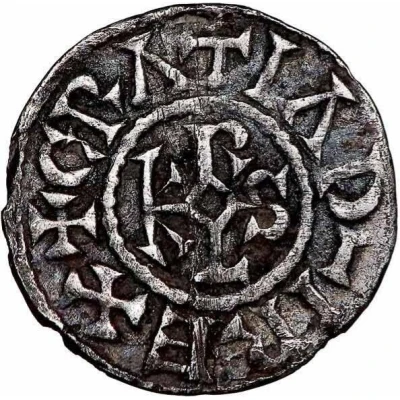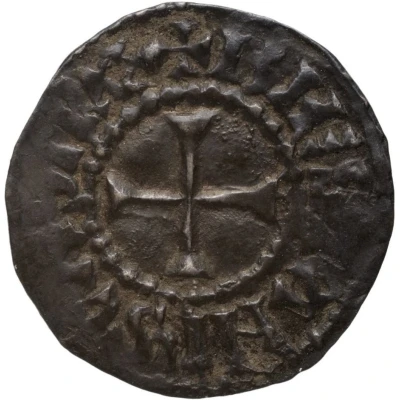


© Bibliothèque nationale de France / Gallica
Obol - Charles II Bar-sur-Aube
| Silver | 0.64 g | - |
| Issuer | Kingdom of West Francia (Carolingian Empire) |
|---|---|
| King | Charles II the Bald (843-877) |
| Type | Standard circulation coin |
| Years | 864-875 |
| Value | 1 Obol (1⁄480) |
| Currency | Pound (840-987) |
| Composition | Silver |
| Weight | 0.64 g |
| Shape | Round (irregular) |
| Technique | Hammered |
| Orientation | Variable alignment ↺ |
| Demonetized | Yes |
| Updated | 2024-10-09 |
| Numista | N#343185 |
|---|---|
| Rarity index | 100% |
Reverse
Cross in a beaded circle, legend around.
Script: Latin
Lettering: ✠ CΛST BΛRRISI
Translation: Castle of Bar.
Interesting fact
One interesting fact about the Obol coin is that it was used as a form of currency during a time of great economic and political change in Europe. The Carolingian Empire, which was established by Charlemagne in the 8th century, was in the process of decentralizing and breaking apart during the reign of Charles II, who ruled from 864 to 875. Despite this, the Obol coin remained a widely accepted form of currency throughout the empire and was used for everyday transactions. Its small size and portability made it an ideal coin for buying and selling goods in local markets, and its silver content made it a valuable commodity in its own right.



